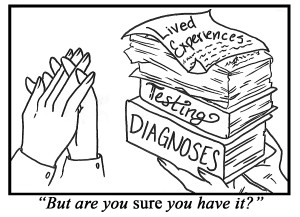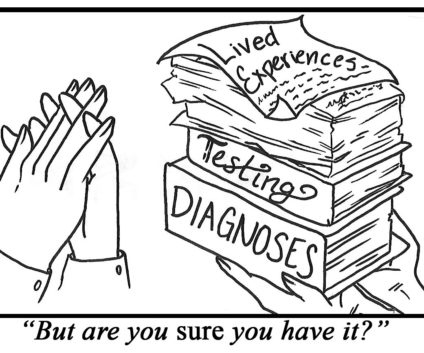BY: MARY WILSON
Opinions Editor

Recently, I saw a new psychiatrist for the first time. Upon reviewing my medical history, the doctor paused and looked at me.
“Autism?” he said, “You’re not autistic. Who did your evaluation? Are you sure?”
I explained that I was indeed autistic — I had had two formal evaluations done, one at twelve years old and the other at eighteen.
Yes, I am sure I’m autistic.
Asperger’s, to be precise. Asperger’s isn’t a diagnosis anymore. Perhaps this is why the psychiatrist with the fancy degrees on the office wall was stumped: the common image of someone on the autism spectrum doesn’t look like me. I can talk and communicate my needs, I’m in college and doing appropriate level coursework, I am capable of taking care of myself.
Oh, yeah. I’m also a girl. Surely, girls aren’t autistic.
The criteria used to diagnose Autism Spectrum Disorder is largely based on studies of autistic boys. A quick Google search for ‘autism’ will produce a picture of a Caucasian, male toddler. Google goes on to specify that more males than females have the diagnosis. The gender gap in autism is real as there are more and more women sharing their stories of receiving an autism diagnosis later in life, often after their children are diagnosed with the neurodevelopmental disability. More awareness, especially of autistic girls, has helped push the diagnostic rates closer to reality.
Current estimates from the Center for Disease Control and Prevention (CDC) puts one in 59 children on the spectrum. The CDC also states that boys are four times more likely to be autistic than girls. The accuracy of this statistic is being questioned. Are boys really more likely to be autistic? Is there not enough information about autistic girls in the medical and general population?
Autistic girls are often labeled as “higher-functioning.” Current theories on this say girls are naturally better at social skills and may be able to slip under the diagnostic radar. The Diagnostic and Statistical Manual of Mental Disorders, Fifth Edition (DSM) specifies that while symptoms must be present in the early developmental period, they may not fully manifest until “social demands exceed limited capacities, or may be masked by learned strategies in later life.” In layman’s terms, it’s often not until puberty that autistic girls find themselves struggling to keep up with their peers in social situations.
I’ve often wondered if my autism diagnosis would have come earlier had I been born a boy. The autism researcher Simon Baron-Cohen is known for his “extreme male brain” theory of autism. That is, the brains of girls on the autism spectrum are more similar to the brains of boys who are not.
My psychiatrist ended the visit with a prescription for refills of my anxiety and depression medicines with instructions to bring in the reports from my autism evaluations. Surely, I — and the professionals who did my evaluation — are wrong about me being autistic. After all, I’m a girl.











